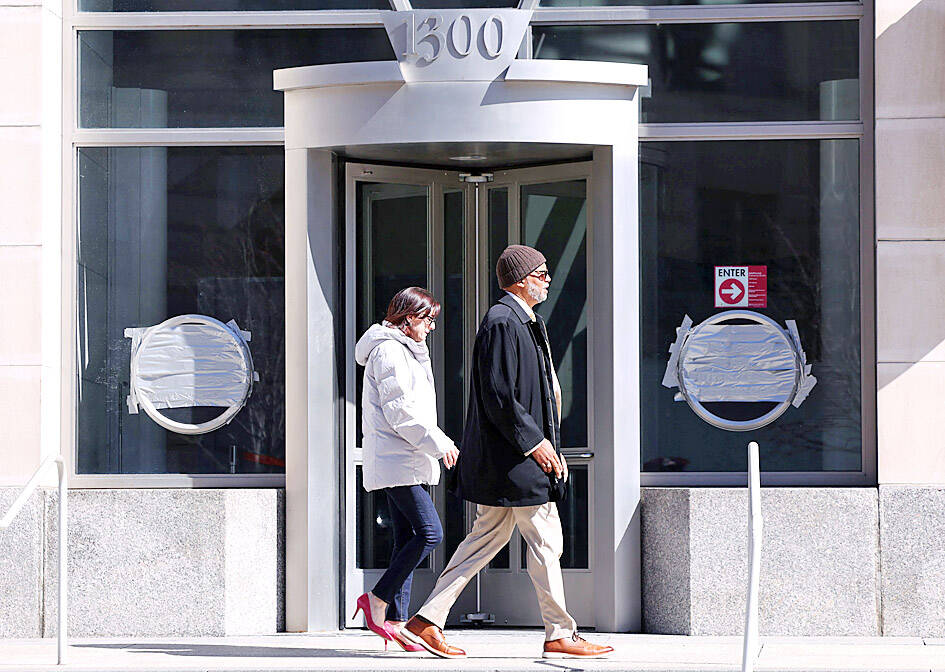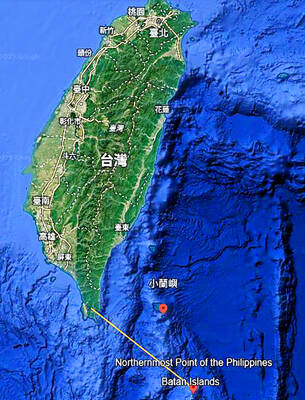The US has dramatically cut the budgets of overseas development and aid programs, with multi-year contracts pared down by 92 percent, or US$54 billion, the US Department of State said on Wednesday.
On his first day in office, US President Donald Trump signed an executive order demanding a freeze on all US foreign aid for 90 days. The pause aimed to allow the administration to review overseas spending with an eye to gutting programs not aligned with Trump’s “America first” agenda.
The review in part targeted multi-year foreign assistance contracts awarded by the US Agency for International Development (USAID), with the vast majority eliminated during its course.

Photo: Reuters
“At the conclusion of a process led by USAID leadership, including tranches personally reviewed by [US] Secretary [of State Marco] Rubio, nearly 5,800 awards with US$54 billion in value remaining were identified for elimination as part of the America First — a 92 percent reduction,” a state department spokesperson said in a statement.
The review also looked at more than 9,100 grants involving foreign assistance, valued at more than US$15.9 billion. At the conclusion of the review, 4,100 grants worth almost US$4.4 billion were targeted to be eliminated, a 28 percent reduction.
“These commonsense eliminations will allow the bureaus, along with their contracting and grants officers, to focus on remaining programs, find additional efficiencies and tailor subsequent programs more closely to the administration’s America first priorities,” the state department said.
Programs that were not cut included food assistance, life-saving medical treatments for diseases like HIV and malaria, and support for countries including Haiti, Cuba, Venezuela and Lebanon, among others, the spokesperson said.
On Tuesday, a federal judge gave the Trump administration less than two days to unfreeze all aid, after a previous court order issued nearly two weeks earlier went ignored.
The Trump administration filed a petition to put a hold on the lower-court order, which was granted by US Supreme Court Chief Justice John Roberts late on Wednesday, US media reported.
USAID, created after a bill passed by the US Congress in 1961, had a workforce of more than 10,000 employees prior to the freeze, which sparked shock and dismay among personnel.
The agency announced on Sunday that it was laying off 1,600 of its employees in the US and placing most of the remaining staff on administrative leave.
During his election campaign, Trump promised to slash federal government spending and bureaucracy, a task he bestowed upon his top donor and close adviser, billionaire Elon Musk, as part of the newly created US Department of Government Efficiency.
See Australia on page 5

SECURITY: As China is ‘reshaping’ Hong Kong’s population, Taiwan must raise the eligibility threshold for applications from Hong Kongers, Chiu Chui-cheng said When Hong Kong and Macau citizens apply for residency in Taiwan, it would be under a new category that includes a “national security observation period,” Mainland Affairs Council (MAC) Minister Chiu Chui-cheng (邱垂正) said yesterday. President William Lai (賴清德) on March 13 announced 17 strategies to counter China’s aggression toward Taiwan, including incorporating national security considerations into the review process for residency applications from Hong Kong and Macau citizens. The situation in Hong Kong is constantly changing, Chiu said to media yesterday on the sidelines of the Taipei Technology Run hosted by the Taipei Neihu Technology Park Development Association. With

A US Marine Corps regiment equipped with Naval Strike Missiles (NSM) is set to participate in the upcoming Balikatan 25 exercise in the Luzon Strait, marking the system’s first-ever deployment in the Philippines. US and Philippine officials have separately confirmed that the Navy Marine Expeditionary Ship Interdiction System (NMESIS) — the mobile launch platform for the Naval Strike Missile — would take part in the joint exercise. The missiles are being deployed to “a strategic first island chain chokepoint” in the waters between Taiwan proper and the Philippines, US-based Naval News reported. “The Luzon Strait and Bashi Channel represent a critical access

CARROT AND STICK: While unrelenting in its military threats, China attracted nearly 40,000 Taiwanese to over 400 business events last year Nearly 40,000 Taiwanese last year joined industry events in China, such as conferences and trade fairs, supported by the Chinese government, a study showed yesterday, as Beijing ramps up a charm offensive toward Taipei alongside military pressure. China has long taken a carrot-and-stick approach to Taiwan, threatening it with the prospect of military action while reaching out to those it believes are amenable to Beijing’s point of view. Taiwanese security officials are wary of what they see as Beijing’s influence campaigns to sway public opinion after Taipei and Beijing gradually resumed travel links halted by the COVID-19 pandemic, but the scale of

Pope Francis is be laid to rest on Saturday after lying in state for three days in St Peter’s Basilica, where the faithful are expected to flock to pay their respects to history’s first Latin American pontiff. The cardinals met yesterday in the Vatican’s synod hall to chart the next steps before a conclave begins to choose Francis’ successor, as condolences poured in from around the world. According to current norms, the conclave must begin between May 5 and 10. The cardinals set the funeral for Saturday at 10am in St Peter’s Square, to be celebrated by the dean of the College